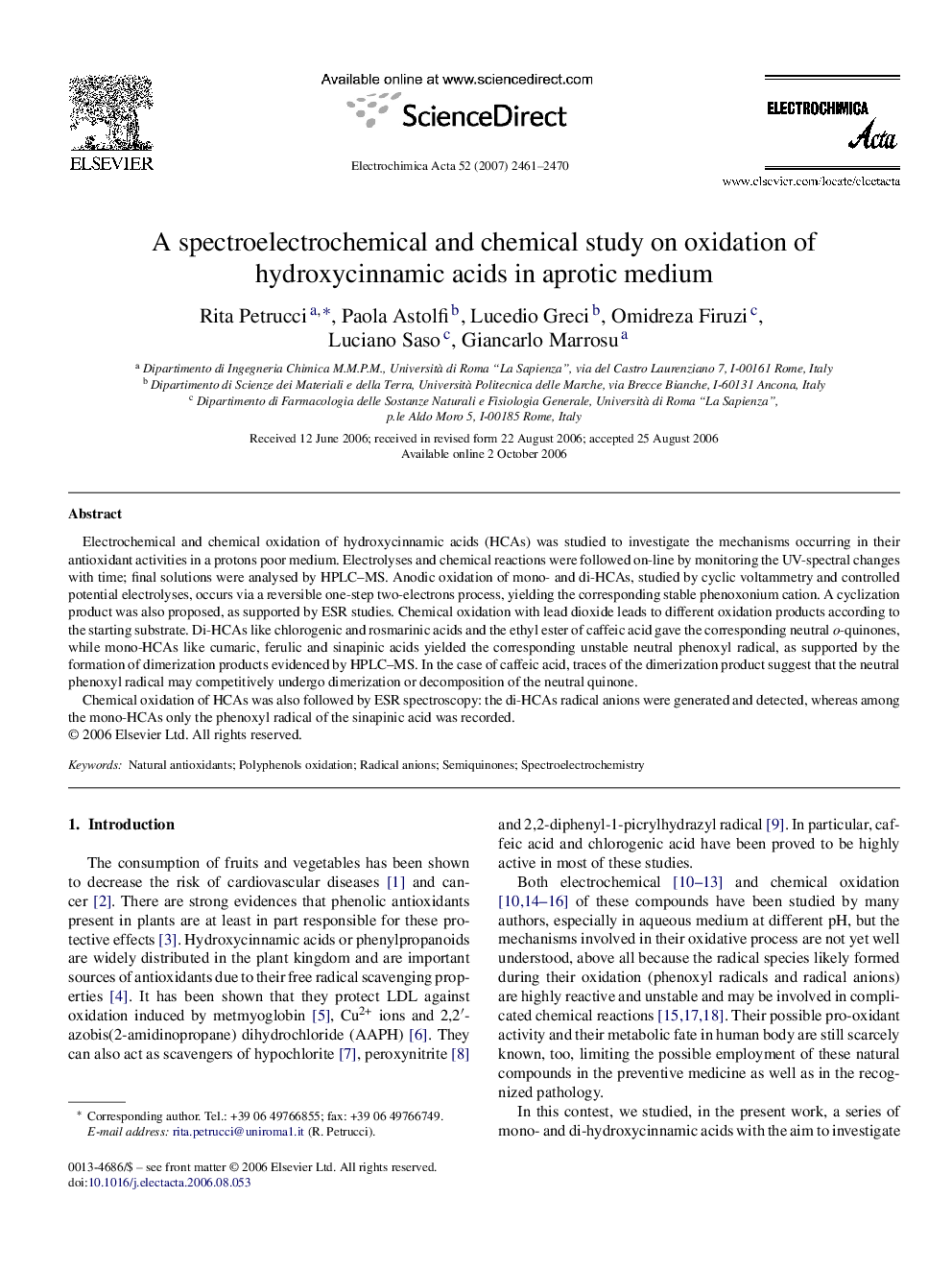| Article ID | Journal | Published Year | Pages | File Type |
|---|---|---|---|---|
| 194894 | Electrochimica Acta | 2007 | 10 Pages |
Electrochemical and chemical oxidation of hydroxycinnamic acids (HCAs) was studied to investigate the mechanisms occurring in their antioxidant activities in a protons poor medium. Electrolyses and chemical reactions were followed on-line by monitoring the UV-spectral changes with time; final solutions were analysed by HPLC–MS. Anodic oxidation of mono- and di-HCAs, studied by cyclic voltammetry and controlled potential electrolyses, occurs via a reversible one-step two-electrons process, yielding the corresponding stable phenoxonium cation. A cyclization product was also proposed, as supported by ESR studies. Chemical oxidation with lead dioxide leads to different oxidation products according to the starting substrate. Di-HCAs like chlorogenic and rosmarinic acids and the ethyl ester of caffeic acid gave the corresponding neutral o-quinones, while mono-HCAs like cumaric, ferulic and sinapinic acids yielded the corresponding unstable neutral phenoxyl radical, as supported by the formation of dimerization products evidenced by HPLC–MS. In the case of caffeic acid, traces of the dimerization product suggest that the neutral phenoxyl radical may competitively undergo dimerization or decomposition of the neutral quinone.Chemical oxidation of HCAs was also followed by ESR spectroscopy: the di-HCAs radical anions were generated and detected, whereas among the mono-HCAs only the phenoxyl radical of the sinapinic acid was recorded.
